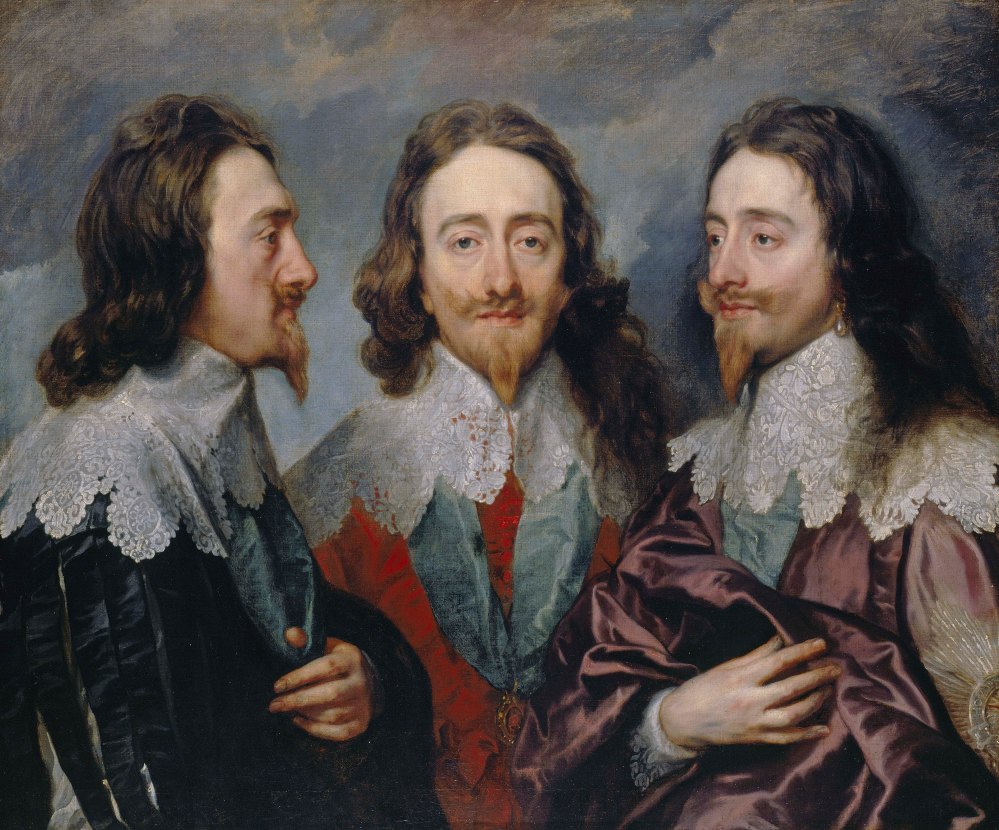
Leonardo da Vinci’s ‘Salvator Mundi’, which last year smashed the record for the most expensive artwork ever sold at auction, was not considered one of the jewels of Charles I’s art collection. During the Interregnum, when ‘the late king’s goods’ were disposed of by the republican government, it was sold to a mason – the appropriately named John Stone – for £30, hardly a princely sum, even at seventeenth century prices. That will be one reason (I’m sure there are many others) why it’s not included in the Royal Academy’s new show, ‘Charles I: King and Collector’.
Sir Oliver Millar, the former Surveyor of the Queen’s Pictures, thought that the perfect Charles I exhibition could only be mounted in the imagination, because it would mean borrowing some of the most famous pictures in the world. Well, the RA has made a decent stab at that, with impressive loans from the Paris Louvre, the Museo del Prado in Madrid and elsewhere by artists of the calibre of Breughel, Titian, Van Dyck, Rubens and Velasquez. By far the biggest lender, though, is the Queen: over two-thirds of exhibits on show at Burlington House are from the current Royal Collection; the walls at Windsor Castle must be looking very bare at the moment. After the Restoration, Charles II managed to buy back a significant chunk of his father’s estate, including such iconic images as Van Dyck’s ‘Charles I in Three Positions’ and other, lesser-known works, rarely seen today.

Charles may have been a hopeless king but his eye for great art was almost faultless. One of his biggest coups was the purchase of Mantegna’s great cycle ‘The Triumphs of Caesar’ from the bankrupt Dukes of Gonzaga in 1629-32; all nine canvases (and they are huge) have been brought up from Hampton Court for the exhibition. In an adjoining room there’s a selection of tapestries from the Mortlake tapestry workshops based on the famous Raphael Cartoons, which Charles bought for £300 in 1623, when he was still Prince of Wales. This underlines Charles’s astonishing precocity as a collector, all the more remarkable for having been achieved from a virtual standing start: earlier British monarchs weren’t exactly noted for their interest in the visual arts. ‘But wait’, I hear you say, ‘what about Holbein at the Court of Henry VIII?’ In fact, most of the Holbeins in the Royal Collection were acquired by Charles between 1625 and 1640.
The spotlight of the exhibition falls most dazzlingly of all on the two biggest stars in the seventeenth century art firmament, Rubens and Van Dyck, who between them transformed the unprepossessing king – he stood less than five foot in his stockinged feet – into, variously, country gent, father of the nation, Rex Imperator, even St. George saving England from the dragon. The impact of these paintings on later British art would be enormous (on his deathbed Thomas Gainsborough is said to have murmured, ‘We are all going to heaven, and Vandyck is of the company’).
Lesser talents on show include Orazio Gentileschi, father of the proto-feminist painter Artemisia Gentileschi, long a personal favourite of mine. His seductive interpretations of some of the raunchier stories from the Old Testament (‘Lot and his Daughters’, ‘Joseph and Potiphar’s Wife’) adorned the Greenwich residence of Queen Henrietta Maria, who emerges here as no mean patron in her own right. In a nice touch, the labels on these and other works identify their original location in the collection, where known, according to the original inventories (‘Whitehall Palace, Little Room between the Breakfast Chamber and the Privy Gallery’).

Towards the end of the show a room has been arranged in the manner of the ‘Cabinet of Curiosities’ in the Royal Palace at Whitehall. Here the king would withdraw to admire smaller works ‘in the secresie of a retired and more solitary place’; these included drawings, statuettes, miniatures and ‘limnings’ – smaller copies of the highlights of the collection ‘in large’. Just when you think you’ve exhausted the potential of this room, you notice Rembrandt’s ‘Portrait of the Artist’s Mother’ lurking in the shadows…
The RA is launching its 250th anniversary in grand style. If all this isn’t enough, you could stroll through Green Park to The Queen’s Gallery to see Charles II: Art & Power (to 13 May). Truth be told, the Merrie Monarch wasn’t in the same class as his father when it came to collecting art. Still, it’s a worthy sequel – Charles II: It’s Buyback Time, you might say.
NM
Charles I: King and Collector, 27 January-15 April 2018

Beautiful…Check out my art and poetry…
LikeLike
Excellent review in which the important point is made that by bringing so many works together (an achievement)the Exhibition examines and demonstrates the connoisseurship of Charles I and splendidly, Anthony van Dyck’s influence on the British School of painting. An impressive Exhibition.
LikeLike